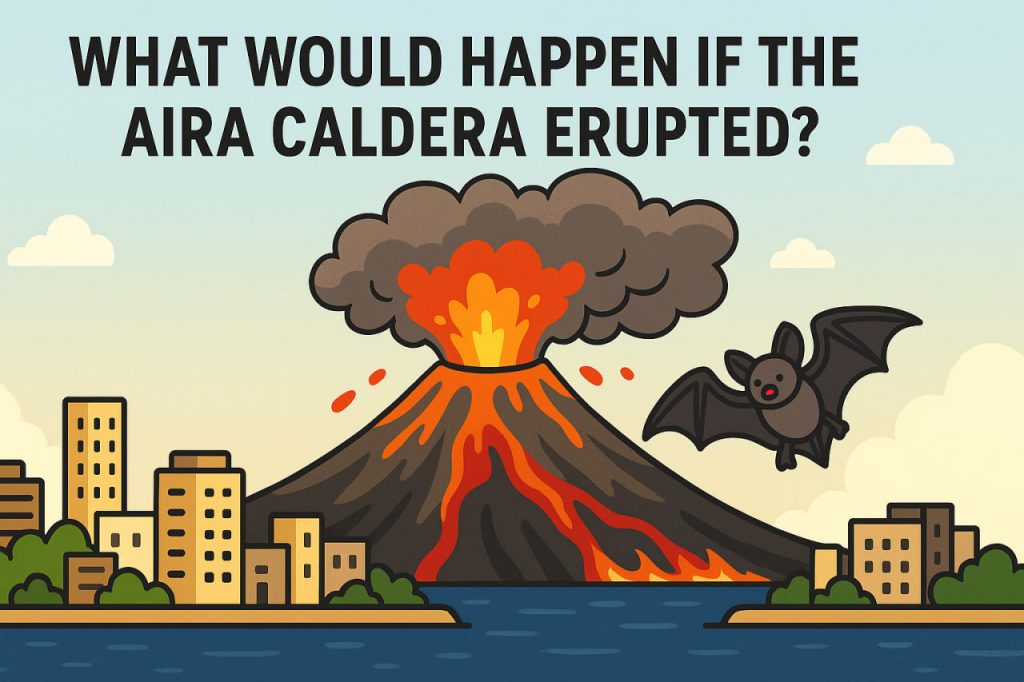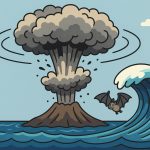The Aira Caldera is a massive volcanic depression in southern Kyushu, Japan. It formed about 22,000 years ago during one of the largest eruptions in Japanese history. Today, within the caldera lies Sakurajima Volcano, one of the most active volcanoes in the world, constantly releasing ash and experiencing minor eruptions.
Past Eruptions
The eruption that created the Aira Caldera ejected enormous amounts of ash and pumice, covering much of Kyushu and beyond. Historical records also show major activity from Sakurajima, including the catastrophic eruption of 1914, which destroyed villages and connected the island volcano to the mainland.
Possible Local Consequences
If the Aira Caldera were to experience a super-eruption, the local consequences would be devastating. Kagoshima City, home to over half a million people, lies just a few kilometers away. Pyroclastic flows, ashfall, and lava could overwhelm the region, forcing mass evacuations.
Regional and National Impact
A large eruption could blanket much of Kyushu and even Honshu in thick volcanic ash, disrupting transportation, agriculture, and power supply. Airports and shipping routes would be paralyzed, and daily life across Japan could be severely affected.
Global Climate Consequences
If the eruption were on the scale of its original formation, it could inject vast amounts of sulfur dioxide and ash into the stratosphere. This would cause global cooling, similar to the effects of past volcanic super-eruptions. Crop failures and climate disruptions could last for years, affecting food supply worldwide.
Monitoring and Preparedness
Japanese scientists closely monitor the Aira Caldera and Sakurajima with seismic instruments, gas sensors, and satellite data. While small eruptions occur frequently, there are no current signs of an imminent super-eruption. Still, its potential risk makes it one of the most closely studied volcanic systems in the world.
Conclusion
An eruption of the Aira Caldera could be catastrophic on local, national, and even global scales. From mass evacuations in Kagoshima to potential climate effects worldwide, it represents one of the most significant volcanic hazards on Earth. Continuous monitoring and preparedness are essential to mitigate such risks.
Please take care of yourself and your loved ones now, before trouble comes to your home. If you want to know how, please write in the comments.
Glossary
- Caldera – large volcanic depression formed after massive eruptions.
- Super-eruption – volcanic eruption ejecting over 1,000 km³ of material.
- Pyroclastic flow – fast-moving avalanche of hot gases and volcanic debris.
- Ashfall – volcanic ash raining down after an eruption.
- Sulfur dioxide (SO₂) – volcanic gas that can cool Earth’s climate when injected into the stratosphere.
- Stratosphere – atmospheric layer above the troposphere, 10–50 km above Earth’s surface.


